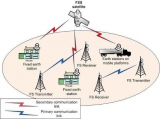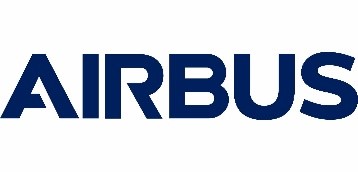
-
StatusCompleted
-
Status date2015-10-30
-
Activity Code1B.064
To identify and validate the feasibility of sharing the spectrum between satellite telecommunication networks with networks of other radio-communication services e.g. radio relays, mobile terrestrial networks, earth observation satellite systems, science missions, in more effective manners, taking into account frequency sharing scenarios with time, space, and spectrum dynamic situations (traffic varies over the time of the day – month – year - over the service area and according to spectrum load).
- State-of-the art review on frequency sharing techniques in terrestrial domain and discuss the applicability of these techniques in satellite domain
- Scenarios and use cases where the proposed techniques can be studied and validated using simulations and analysis
- Both technical and economic viewpoints will be considered in selection of frequency sharing techniques to be applied in satellite systems
- Roadmap for the studied techniques and recommendations for future work to be given
- A strategy to maximize the European/Canadian Industry benefits will be proposed and dissemination plan to share the knowledge generated in the project provided.
To find out pertinent solutions for application of frequency sharing techniques in satellite systems, to analyse the scenarios and use cases with chosen techniques in detail from technical and economic viewpoint, to draw a technology roadmap for the future, and to provide a strategy for industry.
To gain knowledge on frequency sharing techniques and their applicability in satellite systems. The area is not studied deeply and this project will help in finding good solutions for the efficient use of available resources both in broadcasting and two-way satellite communications.
Broad state-of-the art review on frequency sharing techniques in terrestrial domain and discussion on their applicability in satellite systems will be made. Development of scenarios and use cases for application of the frequency sharing techniques to satellite systems will be carried out and most promising techniques selected for further studies. Technical work carried out regarding the selected scenarios will include use of simulations and analysis. Economic viewpoints and regulatory landscape will be highlighted throughout the project work.
The work is divided into 5 main tasks. Task 1 defines the reference picture to the project by defining key metrics, scenarios and use cases for further study. Task 2 provides state-of-the art on terrestrial frequency sharing techniques and defines the applicability of the studied techniques in satellite systems. Task 3 will further study the practical applicability and implementation of the selected techniques in subset of use cases. Task 4 will provide the technology development roadmap and recommendation for further studies. Finally, the work is summarized in Task 5 by proposing a detailed strategy for European/Canadian industry in order to maximize their benefits in the study area and providing a dissemination plan for the generated knowledge. Duration of the project is 24 months.
The project studied the applicability of frequency sharing techniques for satellite communications and defined several application scenarios and system use cases that were validated. The studied techniques in the project included spectrum sensing, database access, transmission power control, resource management, directional antennas, and shielding. Each technique can help in solving part of the problem but a higher-level of coordination is needed to ensure a dynamic sharing. Database based access is a favoured method, compared to sensing in all cases and is the best candidate to have this coordination and control role as a trusted entity.
We analysed the proposed use cases in both economic and technical viewpoints. In addition to techno-economic findings, a roadmap was prepared, outlining critical technologies and components together with their expected roadmaps in satellite domain. The roadmap is structured based on the four main scenarios defined in the project detailing steps for each case separately.
Based on the work carried out in this project we can conclude that frequency techniques are promising and can be applied in satellite communications with several different ways. We believe that both the validation results and the proposed roadmap and strategy serve as a fruitful source for the research and development work in the area of application of frequency sharing techniques to satellite communications.





